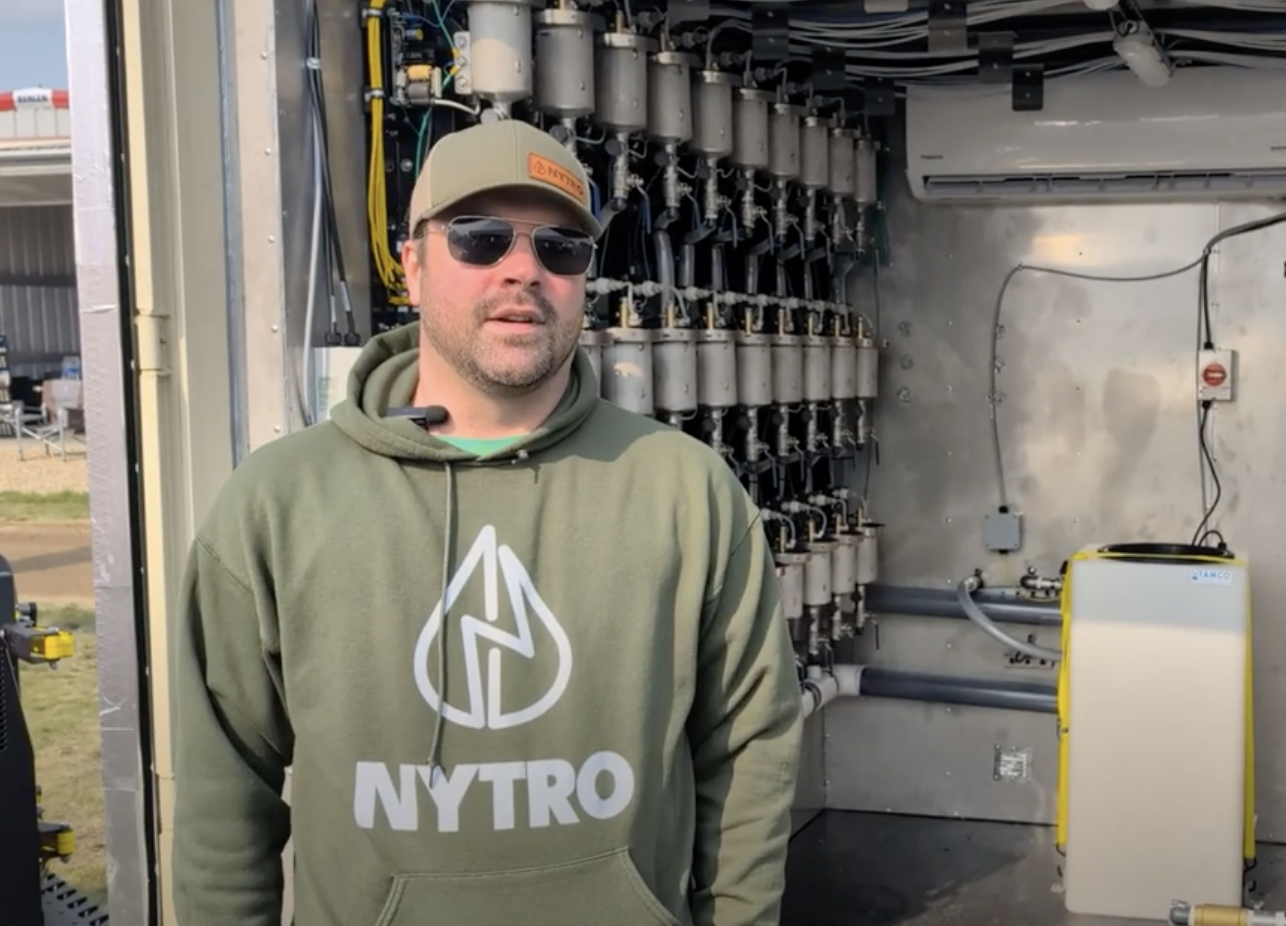Taking the big step from a 65-foot drill to an 84-foot drill is not as easy as beefing up the smaller unit.
Seed Hawk owner Pat Beaujot said it’s an entirely new challenge.
“The trend is toward bigger drills, up toward 100 feet. That’s obvious,” Beaujot said.
“But right now, 84 feet is as big as we can go with this transport design. A 100-foot drill will require a whole new design concept to allow it to fold up into an acceptable transport size.”
Beaujot said going from 65 to 84 feet sent the engineers back to the drawing board for a fresh, from-scratch design.
Read Also

VIDEO: Green Lightning and Nytro Ag win sustainability innovation award
Nytro Ag Corp and Green Lightning recieved an innovation award at Ag in Motion 2025 for the Green Lightning Nitrogen Machine, which converts atmospheric nitrogen into a plant-usable form.
“A lot of new engineering went into the toolbar, for two reasons. First, we had to make sure the hitch and main frame could handle those huge wings,” Beaujot said.
“Also, we needed the ability to pull a large amount of product behind the toolbar. The prototype at Wigmore Farms pulls nearly 800 bushels plus two liquid wagons. So it’s not just thicker steel. We started all over from scratch.”
Beaujot said the design process yielded a few ideas that will go into the frame design on smaller drills. For example, there is a new hinge point and wing stop mechanism that is retractable, so the arms are no longer sticking up when seeding.
He said Seed Hawk deliberately chose a location like Wigmore Farms for the first prototype 84 footer.
“We wanted to test the prototype in the most punishing soil conditions. If the toolbar was going to have problems, it would be seeding chickpeas deep into the Regina plains clay in a wet spring. We’ve seen no sign of weakness or stress.”
Beaujot said a lot of people ask about the weight factor of the big 777 cart. For the Wigmore drill, Seed Hawk installed dual 30.5 – L32 tires on the rear. At the front it ran 28 – L26s.
“This tire combination handles the weight easily because we transfer some weight to the toolbar. Those six tires on the 777 each carry less weight per tire than on some of our 400 bu. carts. It works out to the equivalent of about 130 bu. per tire,” he said.
“When I went out to watch the seeding in wet fields, I’d say the liquid wagons made deeper ruts than the cart.”
Beaujot said they experienced problems with liquid in the middle compartment, which had never been done on a 777 cart. Seed Hawk found it needed to change some of the structural supports for the middle tank.
The seven-plex toolbar frame folds up to be 17 feet three inches high and 27 feet wide at the top where the castor wheels stick out. Beaujot said that’s acceptable, but he would like to design one that folds smaller.
“Each opener has its own hydraulic cylinder and that allows us to tuck them up out of the way into the frame for transit. You can’t do that with a cultivator frame. But we still do have those castor wheels hanging out up there at the top.”
A second 84-foot drill is in the final stages of construction and has already been sold. It will be completed and on display at the Farm Progress Show in Regina June 20-22.
The 9,000 acre prototype remains at Wigmore Farms and Seed Hawk will conduct a field demonstration there June 21.
“If something was going to break that frame, it would have been seeding deep in that wet heavy clay this spring, especially at 50 acres per hour,” Beaujot said.
List price on the 84-foot Seed Hawk toolbar with openers is $155,800. Cart and options are extras.
For more information, contact Pat Beaujot at 306-538-2221 or visit www.seedhawk.com.














